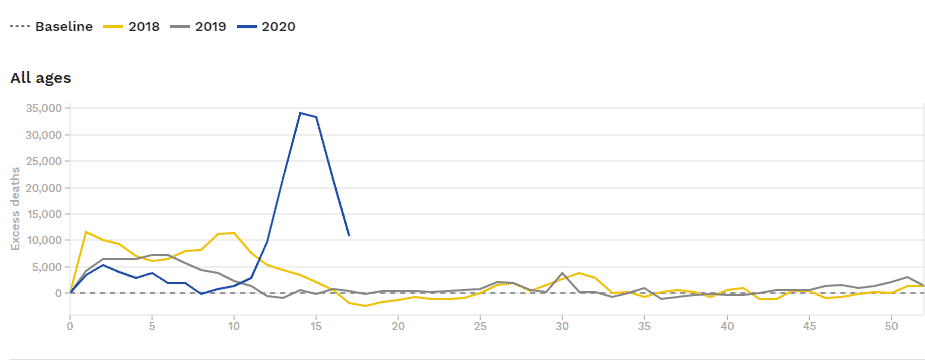With the global death toll from the Covid-19 pandemic continuing to rise, epidemiologists have been working overtime to try to gain a complete picture of the tragedy. The European Mortality Monitoring (EUROMOMO) project is now releasing data on excess mortality since the pandemic began to help us come to terms with its full cost.
The understanding is, at present, that the worst-affected European countries have been Spain, with over 25,000 deaths, the UK with 29,000 and Italy pushing 30,000.
However, the challenge with these numbers is that deaths are more likely to occur precisely when a patient cannot access social service networks. When hospitals are overloaded and cannot provide care, when early-stage Covid-19 patients are told to rest at home because there are no facilities to keep them under surveillance, or when socially isolated patients simply cannot make it to a medical facility, the risk of mortality from Covid-19 rises proportionately.
This creates a paradox. It is precisely in situations where the state has not been able to account for a person that they are at most risk of dying from coronavirus infection.
This is where excess mortality data comes in. The graph below shows weekly excess deaths in EUROMOMO’s 24 member countries, all from Western and Central Europe.

We can see here the figures are very high, and have peaked at a time when mortality in Europe usually subsides as the flu season abates at the start of spring.
Reporting from The Economist has compared this data with mortality reporting from European countries.
In the UK, for instance, between 14 March and 17 April 2020, excess mortality was 27,000 people, as against an official Covid-19 death toll of 19,000 people. This means the real death toll was 42% high than reported.
On these figures, the UK’s current death toll of 28,734 is more likely to be around 40,750 people.
As the Covid-19 pandemic begins to subside in Europe and Australia (though not in later-hit countries like India and Nigeria), public debate will inevitably turn towards easing lock-down measures. This excess mortality data is an important part of assessing the damage so far, and evaluating the real risk of a second-wave of coronavirus infections.